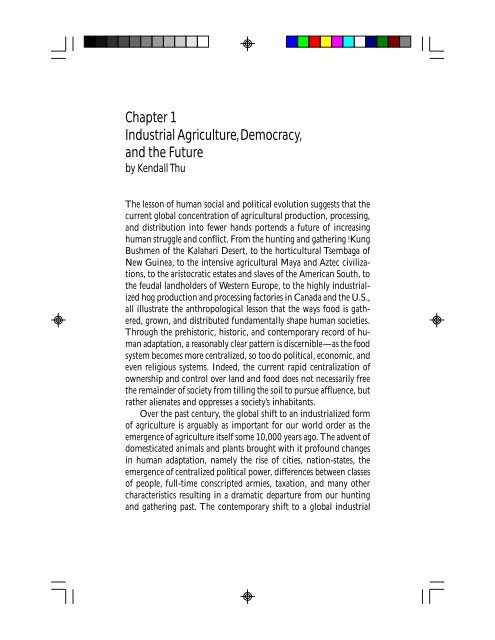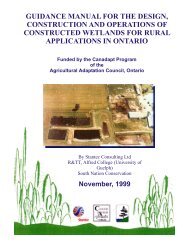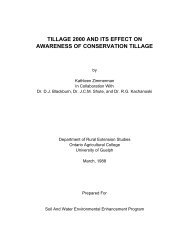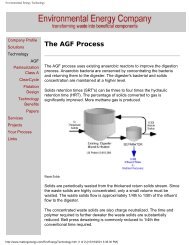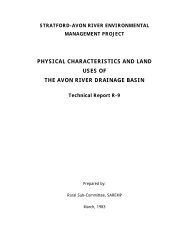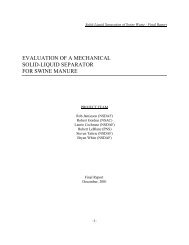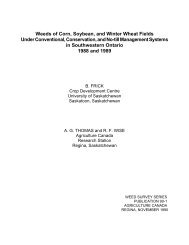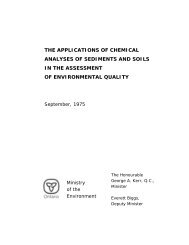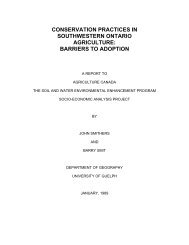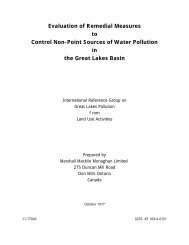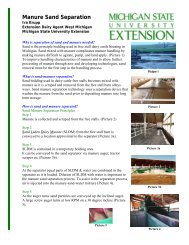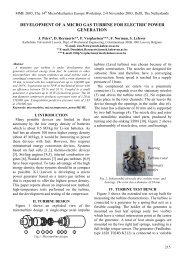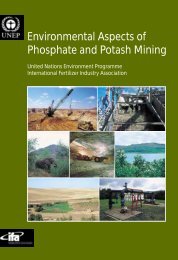Beyond Factory Farming: Corporate Hog Barns and the Threat to ...
Beyond Factory Farming: Corporate Hog Barns and the Threat to ...
Beyond Factory Farming: Corporate Hog Barns and the Threat to ...
Create successful ePaper yourself
Turn your PDF publications into a flip-book with our unique Google optimized e-Paper software.
<strong>Beyond</strong> <strong>Fac<strong>to</strong>ry</strong> <strong>Farming</strong><br />
Chapter 1<br />
Industrial Agriculture, Democracy,<br />
<strong>and</strong> <strong>the</strong> Future<br />
by Kendall Thu<br />
The lesson of human social <strong>and</strong> political evolution suggests that <strong>the</strong><br />
current global concentration of agricultural production, processing,<br />
<strong>and</strong> distribution in<strong>to</strong> fewer h<strong>and</strong>s portends a future of increasing<br />
human struggle <strong>and</strong> conflict. From <strong>the</strong> hunting <strong>and</strong> ga<strong>the</strong>ring !Kung<br />
Bushmen of <strong>the</strong> Kalahari Desert, <strong>to</strong> <strong>the</strong> horticultural Tsembaga of<br />
New Guinea, <strong>to</strong> <strong>the</strong> intensive agricultural Maya <strong>and</strong> Aztec civilizations,<br />
<strong>to</strong> <strong>the</strong> aris<strong>to</strong>cratic estates <strong>and</strong> slaves of <strong>the</strong> American South, <strong>to</strong><br />
<strong>the</strong> feudal l<strong>and</strong>holders of Western Europe, <strong>to</strong> <strong>the</strong> highly industrialized<br />
hog production <strong>and</strong> processing fac<strong>to</strong>ries in Canada <strong>and</strong> <strong>the</strong> U.S.,<br />
all illustrate <strong>the</strong> anthropological lesson that <strong>the</strong> ways food is ga<strong>the</strong>red,<br />
grown, <strong>and</strong> distributed fundamentally shape human societies.<br />
Through <strong>the</strong> prehis<strong>to</strong>ric, his<strong>to</strong>ric, <strong>and</strong> contemporary record of human<br />
adaptation, a reasonably clear pattern is discernible—as <strong>the</strong> food<br />
system becomes more centralized, so <strong>to</strong>o do political, economic, <strong>and</strong><br />
even religious systems. Indeed, <strong>the</strong> current rapid centralization of<br />
ownership <strong>and</strong> control over l<strong>and</strong> <strong>and</strong> food does not necessarily free<br />
<strong>the</strong> remainder of society from tilling <strong>the</strong> soil <strong>to</strong> pursue affluence, but<br />
ra<strong>the</strong>r alienates <strong>and</strong> oppresses a society’s inhabitants.<br />
Over <strong>the</strong> past century, <strong>the</strong> global shift <strong>to</strong> an industrialized form<br />
of agriculture is arguably as important for our world order as <strong>the</strong><br />
emergence of agriculture itself some 10,000 years ago. The advent of<br />
domesticated animals <strong>and</strong> plants brought with it profound changes<br />
in human adaptation, namely <strong>the</strong> rise of cities, nation-states, <strong>the</strong><br />
emergence of centralized political power, differences between classes<br />
of people, full-time conscripted armies, taxation, <strong>and</strong> many o<strong>the</strong>r<br />
characteristics resulting in a dramatic departure from our hunting<br />
<strong>and</strong> ga<strong>the</strong>ring past. The contemporary shift <strong>to</strong> a global industrial<br />
9


